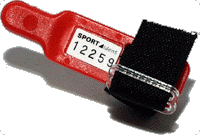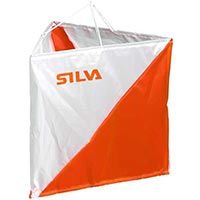Frequent Questions

Is orienteering an outdoor pursuit or a sport?
Orienteering is an athletic sport, and is governed by the International Orienteering Federation. Events are organised as competitive time-trials. The orienteer who completes the course fastest is the winner. Courses are designed to test both fitness and map-reading abilities. World champion athletes would not win orienteering events if they were no good at navigating with a map and compass; and conversely, the best navigator in the world would not win unless they were extremely fit.
Do I have to run?
Orienteering is often misrepresented as purely a navigational exercise, with no competitive element. Whilst it is true that walking round an orienteering course is an excellent way of improving map and compass skills, the added element of time pressure speeds up the learning process: decisions must be made faster, so mistakes are more likely, and nothing teaches faster than trial and error. The crucial skill of relocation can only be mastered by getting lost!
Do I have to go on my own?
In general, orienteers compete as individuals. However, beginners are allowed to compete in groups of two or more, until they gain enough confidence in their navigational skills to go on their own. Another exception is made for very young competitors, who may be shadowed by a parent or coach.
What is an orienteering course?

An orienteering course consists of a start, up to 30 checkpoints (known to orienteers as "control points" or more simply "controls") and a finish. A control is marked on the ground by a red and white "kite" hung on a cane. Each is identified by a unique 3-digit number or control code, and also has a pin punch with which a competitor punches a card to verify his/her visit or an electronic box with a hole in it that you insert your SI Card.

Each competitor has a special orienteering map showing the locations of the start, the controls for his course, and the finish. The controls are joined on the map by straight lines and must be visited in the order shown. The straight lines are simply to make it easy to find the next control on the map; it is up to the competitor to use his navigational skills to decide on the quickest routes, and then to try to follow them - there are no markers on the ground between controls.
Each control is positioned very precisely on a mapped feature, such as a crag or boulder, usually in such a way that the competitor must find the feature before he sees the control kite.
How long is an orienteering course?
This depends on the type of event, and on the age and experience of the competitor.
All orienteering events have one or two courses designed specially for complete novices. Such courses would be less than two miles long, and controls would be positioned on fairly obvious features like path junctions.
Colour-coded events have colour-graded courses, ranging from White (very short and easy - suitable for junior novices) to Brown (long - up to 10 kilometres, with difficult navigation and demanding terrain - suitable for fit, experienced orienteers). Competitors at colour-coded events are eligible for Colour Awards.
Age-class events are intended for orienteers who have some experience. Competitors (other than complete beginners) are expected to compete in their own age-class. There are two-year age classes for juniors under 21 (e.g. M14 is for boys aged 13 and 14) and 5-year age classes for those over 35 (e.g. W45 is for women aged 45-49). M21 and W21 classes cover the age group 21-34, and have the longest courses (shorter for women). Courses for older and younger competitors get progressively shorter. Courses are generally planned so that the winning time is around 60 minutes for over 14s, 30-45 minutes for 14 and under.
What happens at an event?
(The following applies to beginner and colour-coded events; the exact procedure may vary between events)
Events are usually based round a car park and assembly area next to the mapped area. Here you will find a registration tent or vehicle.
At registration, you will:
- pay your entry fee
- be given a blank copy of the event map (i.e. with no course marked on it)
- decide which course you want to do (there are always helpers on hand who can advise if you're unsure)
- decide what time you want to start
- be given a control card (with boxes which you will punch at each control) with attached safety stub. You write your name, club and age class on both card and stub.
- be given a control description sheet - a list of the contols on your course, showing what feature each control is on (boulder, pit etc.) and its unique 3-digit control code (so that you can check that the contol you've found is the one you were looking for!)
When you are ready, make your way to the start, and wait until a minute before your start time, when you will be told to step up to the start line and hand in your safety stub. When the whistle is blown, your timing starts, but before you set off you must copy the course carefully from master maps (next to the start) onto your own map.
You now navigate round the course, punching your card at each control in turn, and when you reach the finish you are timed again, and your control card is collected, and checked to make sure that you have completed the course successfully. Your elapsed time is calculated, and your result is then displayed in the car park on a separate list for your course, so that you can see how you compare to other competitors on the same course. A full list of results is always posted on the club website soon after the event.
If you can find another competitor in the assembly area who has done the same course as you, you can often learn a lot by comparing how you did the course - what routes you chose, what mistakes you made, etc.
Facilities at small events are limited - orange squash is usually available at the finish. At larger events there may be refreshment vans, and traders selling orienteering equipment.
What footwear and clothes do I need?
For beginners, a pair of trainers (functional is better than fashionable!) with a good tread pattern is ideal footwear. If you decide to go to many events, you will eventually want to buy purpose-made (and expensive) orienteering shoes, which are strong, very light, and have studs or similar to give excellent grip.
A T-shirt and lightweight trousers are ideal clothing, and a cagoule and/or pullover if it is wet or cold. Shorts are not suitable; apart from the easiest courses, you are likely to encounter brambles, tree branches and other undergrowth. Experienced orienteers wear ultra-lightweight nylon shirts and trousers, which give protection from brambles without being uncomfortably hot to run in.
What else should I bring?
- Entry money
- Clear plastic bag or map case
- Red biro for copying down your course
- Food and drink
07th Jan 11 by Admin




